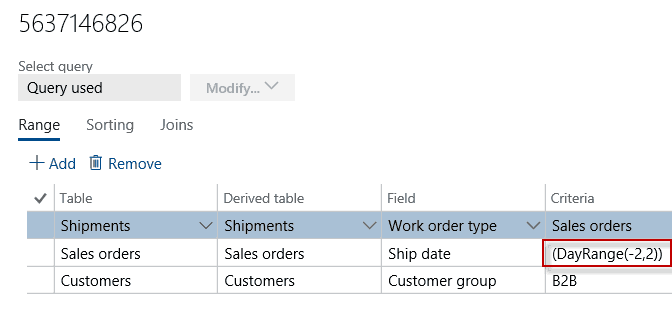Dynamics 365 – Say “Hello” to Wave Templates
One of the basic functionalities of Warehouse Management in Dynamics 365 for Finanace and Operations Enterprise Edition remains the Wave Template functionality. Wave Templates are used to manage, automatically or manually, the Shipping Waves, Production Waves or Kanban Waves. When the Wave is processed, work is created for the operations team(s) to be performed.
Wave Templates dictate what happens in the Wave and a business may need many Wave Templates to meet all of the different situations that may be encountered. For example, A Wave of orders may need to be created because the orders in that wave require special attention or handling. Another Wave of orders may require expediting because the delivery dates requested require rushed shipping methods such as overnight carriers.
As Wave Templates are created, the Names of the Waves should be specific, and the Waves should be ranked from very specific to more generic. As Waves are created, the orders are assigned to the first wave template it fits within the criteria of. The Wave Templates can be moved up or moved down in the ranking as needs change, by simply using the Move up and Move down buttons near the top of the Wave Template page.
A good best practice is to always Validate Template, also using the button near the top of the page, to insure the Wave Template that has been created is error-free.

Creating a Wave Template
Each Wave Template is specific to a Site and Warehouse and contains a General Section and a Methods Section.

Navigate to Warehouse Management > Setup > Waves > Wave Templates
- Click New
- Enter a concise Name and Description
- The Wave Template sequence will auto fill and can be changed later using the Move Up and Move Down buttons
- Select the Site
- Select the Warehouse
- The Template Status will be “Invalid” to begin with, until the template is Validated.
- Indicate if this Wave Template is to be used Automatically upon release of orders to the Warehouse with the Automate Wave Creation indicator
- Indicate if this Wave Template can be assigned additional orders while the wave is “Open” with the Assign to Open Waves indicator
- Indicate if this Wave Template is to be used Process the Wave and create work upon release of orders to the Warehouse with the Process Wave at Release to Whse indicator
- Indicate if this Wave Template is to be processed Automatically upon reaching any of the Wave Thresholds with the Process Wave Automatically at Threshold indicator (only available for Shipping template type)
- Use the Automate Wave Release indicator if the created Wave should be released automatically which makes the work available on the RF devices
- Use the Automate Replenishment Work Release indicator if Replenishment work should be created automatically as a result of using this Template
- Wave thresholds can be set to trigger automatic processing (see #10)
- Wave Weight Threshold – when the weight of the orders in the wave reach this amount
- Shipment Threshold – when the number of Shipments in the wave reach this amount
- Line Threshold – when the number of order lines in the wave reach this amount
- Default Values – Wave Attributes (up to four (4) per wave) can be created and assigned to Wave Templates which will then be displayed in the Wave grid for use in identifying specific attributes of the waves
Examples: Create and assign a “Rush” attribute to the Wave Template created to capture orders with two (2) day or less lead time. Create and Assign Delivery methods to aid in Shipping. Create and assign customer classifications.
Note: Make sure the query attached to the Wave supports the Wave Attributes.

Once the Wave Templates have been created, they must be Validated and they can be moved into proper sequence or order by using the Move Up and Move Down buttons.
Each Wave Template, in order to be specific, must include a query containing criteria the orders will match up against.
Wave Template Queries
The Query attached to the Wave Template determines which orders are captured and attached to the wave, based on the query criteria. The query criteria can range from very simple to very complex so that orders are grouped and processed properly. The complex queries may include multiple tables by way of ‘Joins’ and numerous fields and criteria, including formulas.
Queries can be used to make Waves specific to customers or customer groups, specific to date ranges or delivery methods, specific to payment method (i.e. COD), or any other criteria from the orders, customers, shipments, projects or items, to name a few. The possibilities are endless.

This query includes a formula to allow grouping of only Sales Orders with a Ship Date from minus two (2) days (two days in the past) through two (2) days into the future because the normal order processing time averages three (3) to five (5) days. By grouping the past due and short cycle orders into a Wave, the operations team can place a higher priority and special handling processes on this wave. The Work created for the operations team by processing this wave, could include special work steps to be followed to insure the quickest turn around, or some work steps to be adjusted or skipped, as well as any notifications that may need to be generated as a result.
Any of the standard AX query and filtering syntax may be used as Wave Template query criteria.
Want to know more about Wave Templates in Dynamics 365? Check out the blog post below
Comments
Post a Comment